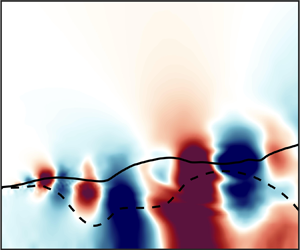Article contents
Spectral proper orthogonal decomposition of harmonically forced turbulent flows
Published online by Cambridge University Press: 29 April 2024
Abstract

Many turbulent flows exhibit time-periodic statistics. These include turbomachinery flows, flows with external harmonic forcing and the wakes of bluff bodies. Many existing techniques for identifying turbulent coherent structures, however, assume the statistics are statistically stationary. In this paper, we leverage cyclostationary analysis, an extension of the statistically stationary framework to processes with periodically varying statistics, to generalize the spectral proper orthogonal decomposition (SPOD) to the cyclostationary case. The resulting properties of the cyclostationary SPOD (CS-SPOD for short) are explored, a theoretical connection between CS-SPOD and the harmonic resolvent analysis is provided, simplifications for the low and high forcing frequency limits are discussed, and an efficient algorithm to compute CS-SPOD with SPOD-like cost is presented. We illustrate the utility of CS-SPOD using two example problems: a modified complex linearized Ginzburg–Landau model and a high-Reynolds-number turbulent jet.
- Type
- JFM Papers
- Information
- Copyright
- © The Author(s), 2024. Published by Cambridge University Press
References
- 6
- Cited by



